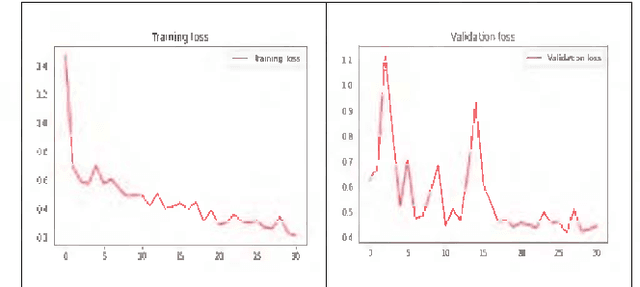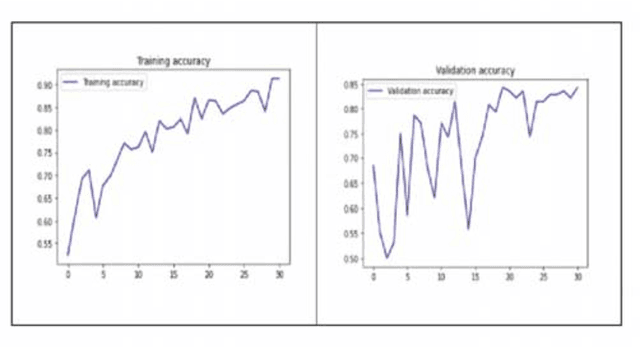Nafisa Anjum
Ultrasound-Based AI for COVID-19 Detection: A Comprehensive Review of Public and Private Lung Ultrasound Datasets and Studies
Nov 06, 2024Abstract:The COVID-19 pandemic has affected millions of people globally, with respiratory organs being strongly affected in individuals with comorbidities. Medical imaging-based diagnosis and prognosis have become increasingly popular in clinical settings for detecting COVID-19 lung infections. Among various medical imaging modalities, ultrasound stands out as a low-cost, mobile, and radiation-safe imaging technology. In this comprehensive review, we focus on AI-driven studies utilizing lung ultrasound (LUS) for COVID-19 detection and analysis. We provide a detailed overview of both publicly available and private LUS datasets and categorize the AI studies according to the dataset they used. Additionally, we systematically analyzed and tabulated the studies across various dimensions, including data preprocessing methods, AI models, cross-validation techniques, and evaluation metrics. In total, we reviewed 60 articles, 41 of which utilized public datasets, while the remaining employed private data. Our findings suggest that ultrasound-based AI studies for COVID-19 detection have great potential for clinical use, especially for children and pregnant women. Our review also provides a useful summary for future researchers and clinicians who may be interested in the field.
Software Supply Chain Vulnerabilities Detection in Source Code: Performance Comparison between Traditional and Quantum Machine Learning Algorithms
May 31, 2023



Abstract:The software supply chain (SSC) attack has become one of the crucial issues that are being increased rapidly with the advancement of the software development domain. In general, SSC attacks execute during the software development processes lead to vulnerabilities in software products targeting downstream customers and even involved stakeholders. Machine Learning approaches are proven in detecting and preventing software security vulnerabilities. Besides, emerging quantum machine learning can be promising in addressing SSC attacks. Considering the distinction between traditional and quantum machine learning, performance could be varies based on the proportions of the experimenting dataset. In this paper, we conduct a comparative analysis between quantum neural networks (QNN) and conventional neural networks (NN) with a software supply chain attack dataset known as ClaMP. Our goal is to distinguish the performance between QNN and NN and to conduct the experiment, we develop two different models for QNN and NN by utilizing Pennylane for quantum and TensorFlow and Keras for traditional respectively. We evaluated the performance of both models with different proportions of the ClaMP dataset to identify the f1 score, recall, precision, and accuracy. We also measure the execution time to check the efficiency of both models. The demonstration result indicates that execution time for QNN is slower than NN with a higher percentage of datasets. Due to recent advancements in QNN, a large level of experiments shall be carried out to understand both models accurately in our future research.
COVID-19 Detection using Transfer Learning with Convolutional Neural Network
Jun 17, 2022



Abstract:The Novel Coronavirus disease 2019 (COVID-19) is a fatal infectious disease, first recognized in December 2019 in Wuhan, Hubei, China, and has gone on an epidemic situation. Under these circumstances, it became more important to detect COVID-19 in infected people. Nowadays, the testing kits are gradually lessening in number compared to the number of infected population. Under recent prevailing conditions, the diagnosis of lung disease by analyzing chest CT (Computed Tomography) images has become an important tool for both diagnosis and prophecy of COVID-19 patients. In this study, a Transfer learning strategy (CNN) for detecting COVID-19 infection from CT images has been proposed. In the proposed model, a multilayer Convolutional neural network (CNN) with Transfer learning model Inception V3 has been designed. Similar to CNN, it uses convolution and pooling to extract features, but this transfer learning model contains weights of dataset Imagenet. Thus it can detect features very effectively which gives it an upper hand for achieving better accuracy.
* 4 pages, 4 figures, 2nd International Conference on Robotics, Electrical and Signal Processing Techniques (ICREST), DHAKA, Bangladesh
 Add to Chrome
Add to Chrome Add to Firefox
Add to Firefox Add to Edge
Add to Edge